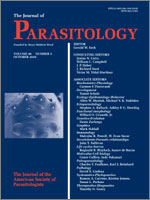An important question in many parasitological studies is the assessment of differences in parasite numbers between samples of hosts. This is not always an easy problem with which to deal. While almost everyone will agree that the main task consists in deciding whether the values in one sample tend to be higher than the values of another sample, there is considerable disagreement about what higher (or lower) should mean. In most cases, dissimilarity measures are differences between mean values, medians, geometric means, prevalence rates, relative effects, and more. In general, different measures can lead to different conclusions. However, a debate as to which measure is superior is fruitless; it depends on goals and circumstances of the respective study. In our opinion, it is more important to identify situations in which most of the above measures coincide, and, hence, one can confidently claim that the values in one sample are higher than in another. This is the case when one sample is stochastically larger than a second. Roughly speaking, a random variable X is stochastically larger than a second random variable Y, when X assumes large values with a higher probability than Y. In this paper, we review this concept using distributional and data examples, and we propose the use of graphical tools for detecting stochastic dominance. Our method provides a relatively easy, visual way of fully justifying general statements that the number of parasites in one sample is larger than in another.
How to translate text using browser tools
1 October 2010
Quantifying Differences in Parasite Numbers Between Samples of Hosts
Bernhard Klar,
Trevor N. Petney,
Horst Taraschewski
ACCESS THE FULL ARTICLE

Journal of Parasitology
Vol. 96 • No. 5
October 2010
Vol. 96 • No. 5
October 2010




